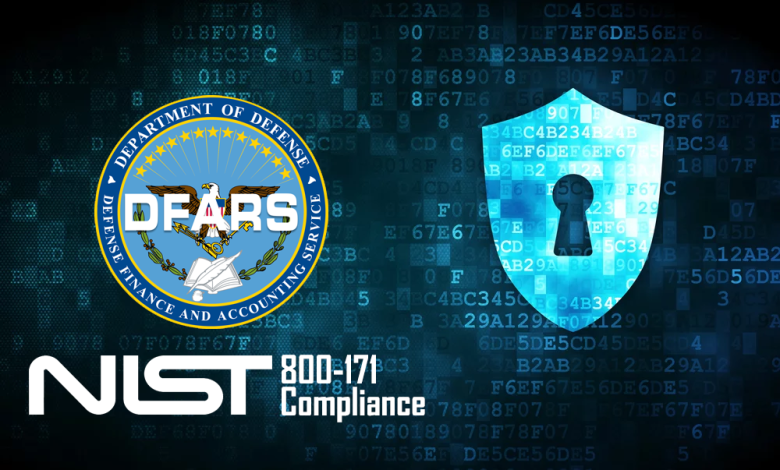Top Tools and Technologies to Support NIST 800-171 Compliance

Achieving NIST 800-171 compliance is a crucial step for organizations handling Controlled Unclassified Information (CUI). This compliance is not only a regulatory requirement but also a vital component of an organization’s overall cybersecurity strategy. Leveraging the right tools and technologies can simplify the compliance process and ensure that all NIST 800-171 requirements are met effectively. This blog explores the top tools and technologies that support NIST 800-171 compliance, aiding in the journey towards achieving Cybersecurity Maturity Model Certification (CMMC).
Security Information and Event Management (SIEM)
A robust Security Information and Event Management (SIEM) system is essential for maintaining NIST 800-171 compliance. SIEM tools collect and analyze security data from various sources within an organization, providing real-time visibility into potential threats and vulnerabilities. By aggregating log data from different systems, SIEM solutions help detect anomalies and facilitate incident response.
These tools support continuous monitoring, a critical aspect of NIST 800-171, by enabling organizations to track and respond to security events promptly. Advanced SIEM systems can also integrate with other security tools, enhancing overall security posture and ensuring comprehensive coverage of security controls.
Endpoint Detection and Response (EDR)
Endpoint Detection and Response (EDR) solutions are vital for protecting endpoints, such as laptops and mobile devices, that access CUI. EDR tools continuously monitor endpoint activities, detect suspicious behavior, and respond to potential threats in real-time. This proactive approach helps mitigate risks associated with remote work and mobile device usage.
EDR technologies support NIST 800-171 compliance by providing detailed visibility into endpoint security, allowing organizations to enforce security policies, manage incidents effectively, and ensure that all endpoints meet the required security standards.
Virtual Private Networks (VPNs)
Virtual Private Networks (VPNs) are crucial for securing remote access to organizational networks. VPNs encrypt data transmitted between remote devices and the organization’s network, protecting it from interception and unauthorized access. This is particularly important for organizations with remote or mobile workforces.
Implementing VPNs helps meet NIST 800-171 requirements for secure data transmission and access control. By ensuring that all remote connections are secure, organizations can protect CUI and maintain compliance with regulatory standards.
Multi-Factor Authentication (MFA)
Multi-Factor Authentication (MFA) is a key security measure that enhances access control, a fundamental requirement of NIST 800-171. MFA requires users to provide two or more forms of verification before granting access to sensitive systems or information. This typically includes something the user knows (password), something the user has (security token), and something the user is (biometric verification).
Implementing MFA reduces the risk of unauthorized access and ensures that only authorized personnel can access CUI. This additional layer of security is crucial for protecting sensitive information and maintaining compliance with both NIST 800-171 and CMMC requirements.
Data Encryption Solutions
Data encryption solutions are essential for protecting CUI both at rest and in transit. Encryption technologies ensure that data remains unreadable to unauthorized users, even if it is intercepted or accessed without authorization. This is a critical component of NIST 800-171 compliance, which mandates the protection of sensitive information.
Organizations should implement robust encryption solutions for databases, files, and communications. Advanced encryption standards (AES) and secure key management practices are recommended to ensure the highest level of data security.
Mobile Device Management (MDM)
Mobile Device Management (MDM) solutions help organizations secure and manage mobile devices that access CUI. MDM tools enable the enforcement of security policies, remote management of device settings, and the ability to wipe data from lost or stolen devices.
MDM technologies support NIST 800-171 compliance by ensuring that mobile devices meet security standards and by providing the capability to protect CUI on mobile endpoints. This is especially important in today’s environment, where mobile and remote work are increasingly common.
Intrusion Detection and Prevention Systems (IDPS)
Intrusion Detection and Prevention Systems (IDPS) are critical for identifying and blocking potential security threats in real-time. These systems monitor network traffic and system activities, detecting malicious behavior and preventing attacks before they can cause harm.
IDPS solutions support NIST 800-171 compliance by providing robust protection against external threats, enhancing incident response capabilities, and ensuring continuous monitoring of network activities. This proactive approach helps maintain a secure environment and protects CUI from unauthorized access.
Security Awareness Training Platforms
Security awareness training platforms are essential for educating employees about cybersecurity best practices and the importance of protecting CUI. Regular training programs help create a culture of security awareness, ensuring that employees understand their roles in maintaining compliance and protecting sensitive information.
These platforms support NIST 800-171 compliance by providing ongoing education on security policies, threat recognition, and incident reporting. By fostering a security-conscious workforce, organizations can reduce the risk of human error and enhance their overall security posture.
Vulnerability Management Tools
Vulnerability management tools are critical for identifying, assessing, and mitigating security vulnerabilities within an organization’s systems and networks. These tools conduct regular scans to detect weaknesses and provide actionable insights for remediation.
Implementing vulnerability management solutions helps organizations maintain NIST 800-171 compliance by ensuring that potential vulnerabilities are promptly addressed. Regular vulnerability assessments and patch management practices are essential for protecting CUI and maintaining a secure environment.
Comprehensive Compliance Management Platforms
Comprehensive compliance management platforms integrate various security tools and provide a centralized solution for managing compliance efforts. These platforms streamline the process of achieving and maintaining NIST 800-171 compliance by automating assessments, tracking compliance status, and generating reports.
These platforms support CMMC assessments by providing detailed documentation of compliance efforts, facilitating audits, and ensuring that all necessary controls are implemented and maintained. By leveraging these integrated solutions, organizations can simplify their compliance journey and enhance their overall security posture.
Incorporating these tools and technologies into your organization’s cybersecurity strategy is essential for achieving and maintaining NIST 800-171 compliance. By leveraging the right solutions, organizations can protect CUI, meet regulatory requirements, and enhance their overall security posture, positioning themselves for successful CMMC certification.




